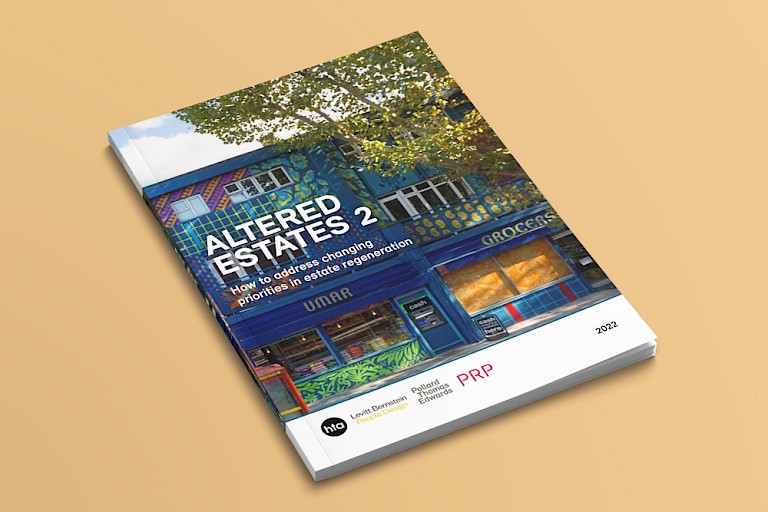
Altered Estates 2 illuminates the new and continuing challenges to successful estate regeneration in the UK, building on its forerunner Altered Estates (2016).
The challenges and solutions we set out in 2016 remain just as relevant today, but there have been significant changes of priority, in part triggered by momentous events from the Grenfell fire disaster and Brexit to the global pandemic, the climate crisis and a changing public mood around diversity and social inclusion.
Steep increases in energy prices, which will hit estate residents hard, and general increases in construction costs, which will affect the viability of all housing projects, have also altered the regen landscape.
Altered Estates 2 aims to set estate regeneration in today’s context by exploring six key themes:
- Planning for social value: Set, measure, monitor and review local social value targets, from early days to post-occupation – estate regeneration is about much more than housing.
- Building community support: Enable communities across the country to determine their own future by extending mandatory ballots beyond London.
- Supporting lifetime neighbourhoods: Make every new home suitable for young and old by adopting national space standards based on category M(4)2 accessibility.
- Giving pride to place: Create sustainable places and avoid excessive density by providing at least five square metres per person of accessible and useful shared open space.
- Addressing climate change: Scrap VAT on energy efficient refurbishment – recent concessions do not go far enough.
- Delivering responsible regeneration: Get ready to implement the Building Safety Act – clients, their advisors and designers must urgently upskill to meet their new responsibilities.
We collaborated on this publication with three other architectural practices: HTA Design, Pollard Thomas Edwards and PRP. We have been at the forefront of housing debate, design and delivery for 50 years, and are currently involved with a significant proportion of the new and improved homes being delivered across the UK. We are therefore able to take a long view, and to bring experience from across the whole spectrum of housing by type, location and tenure.